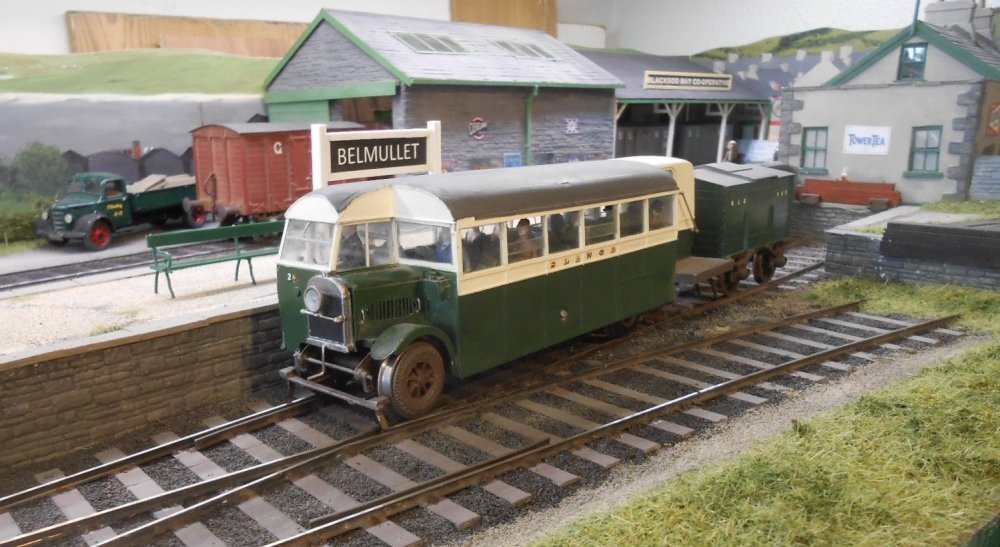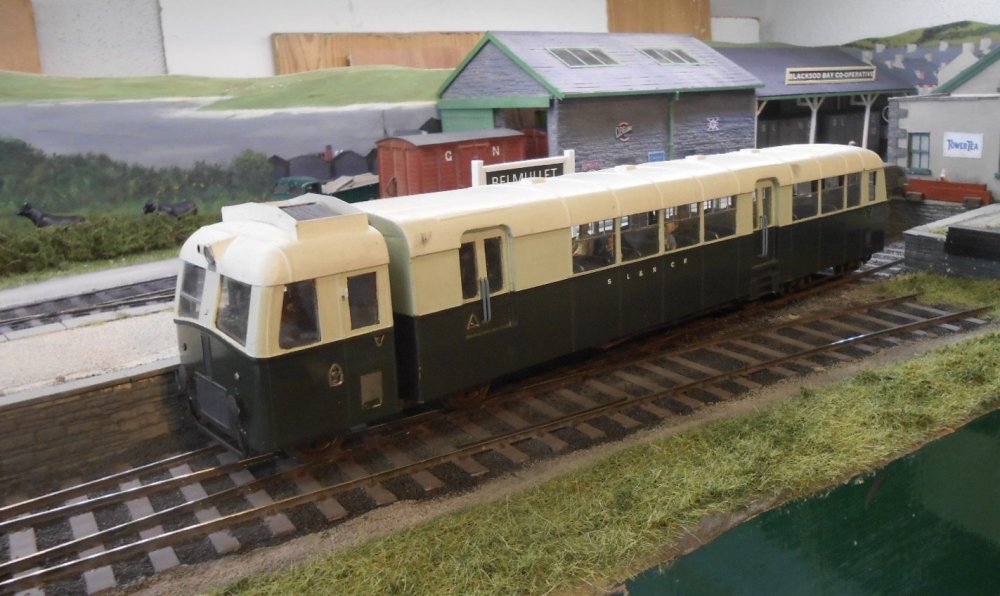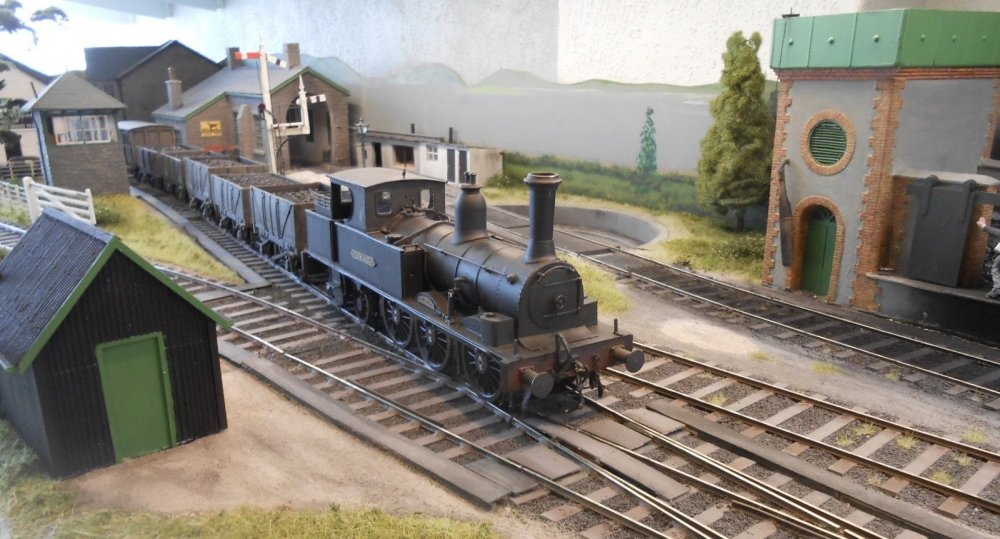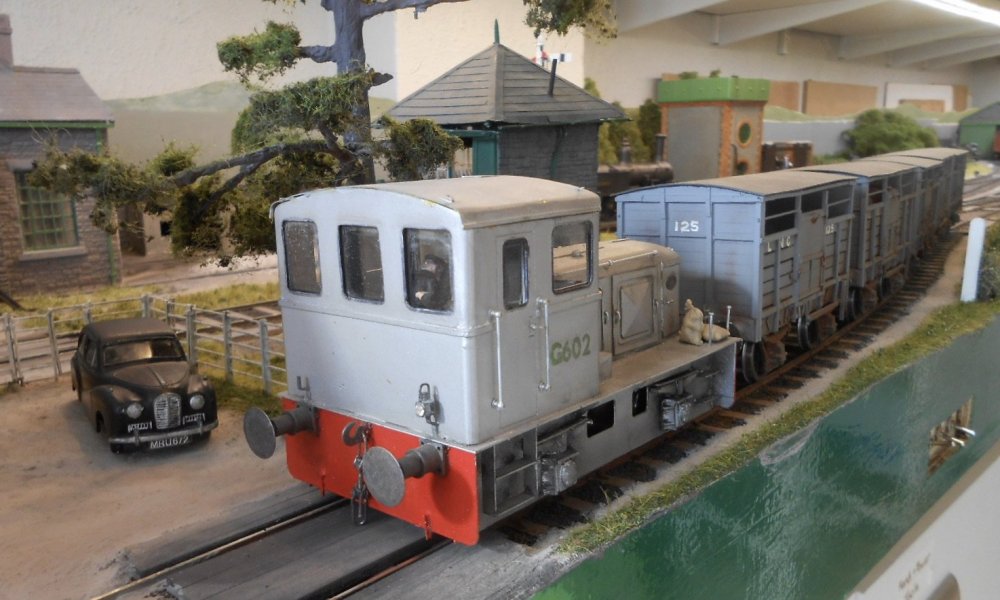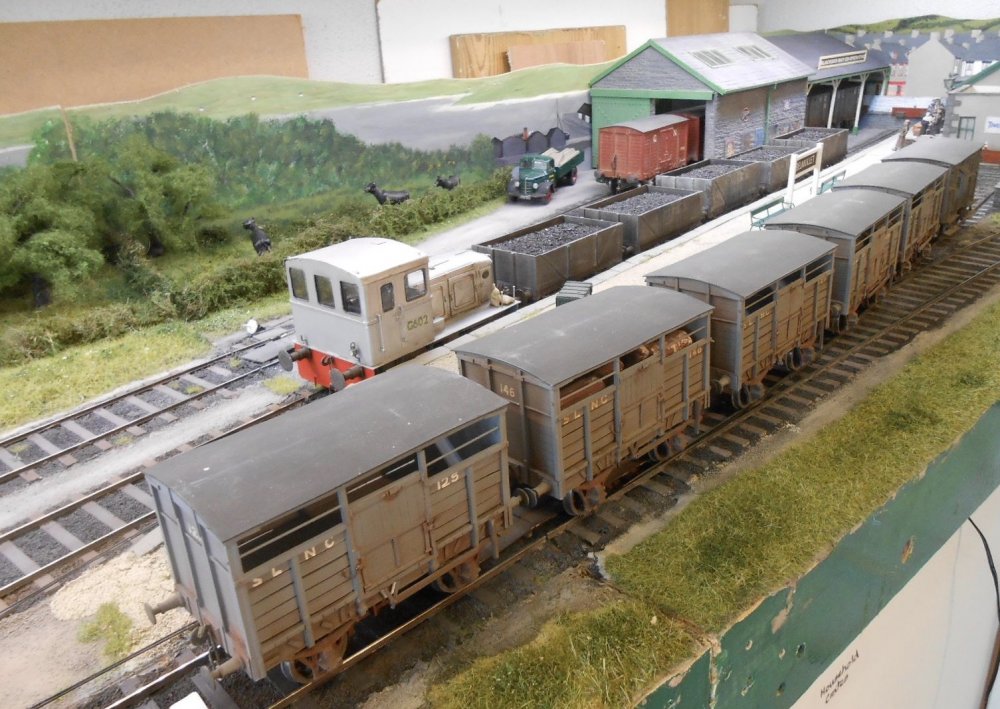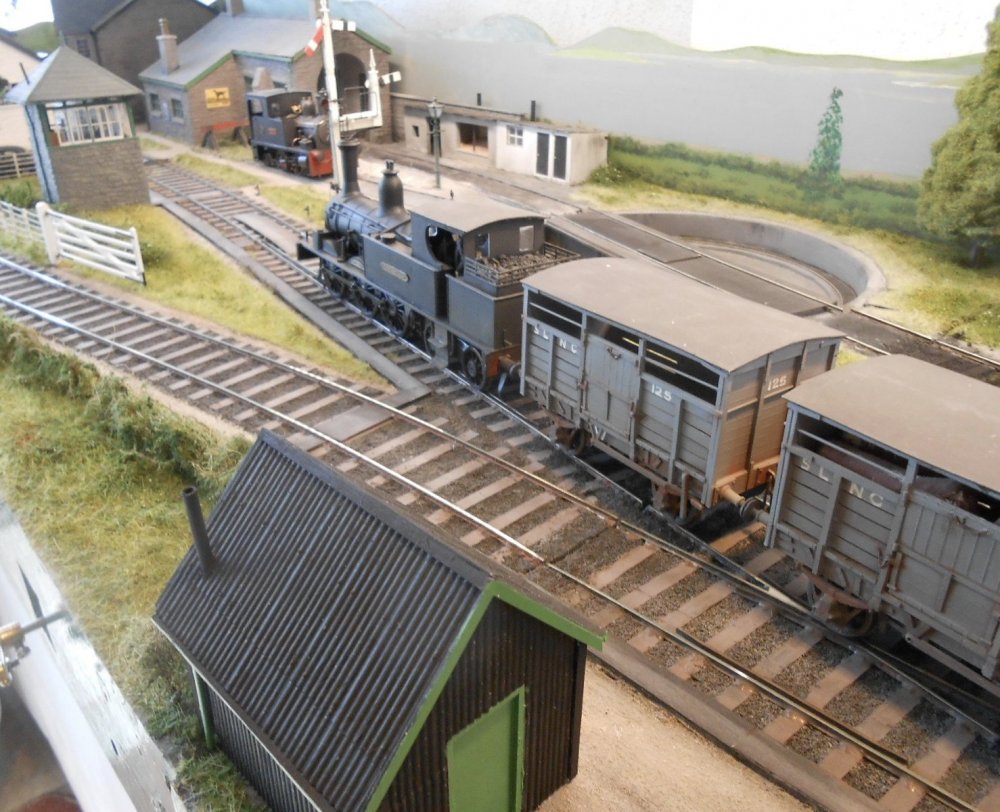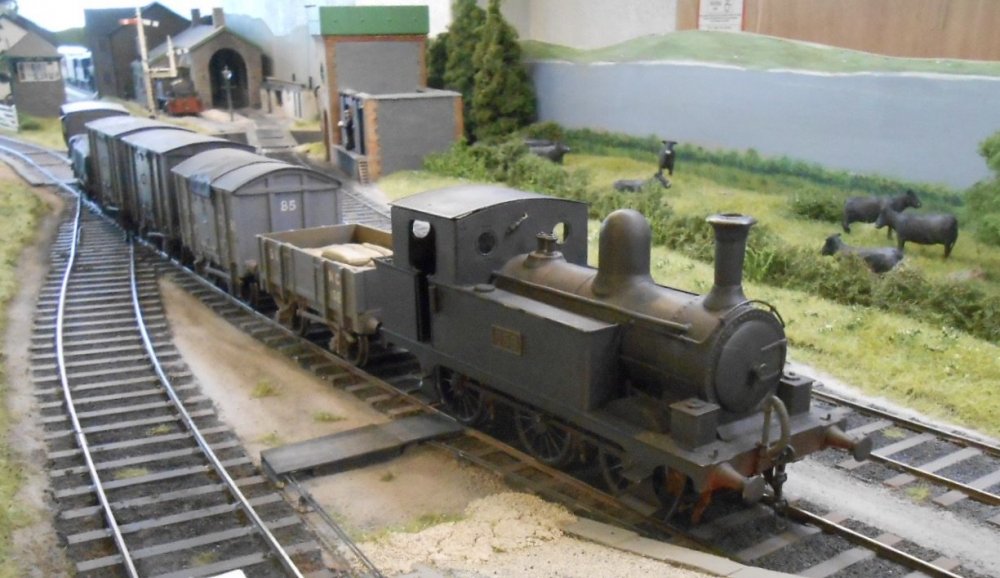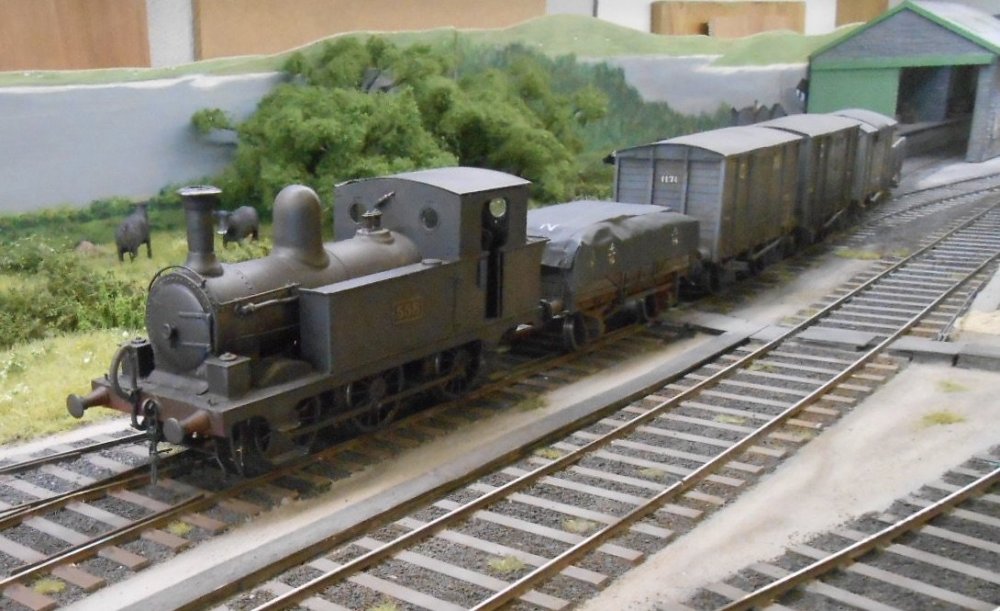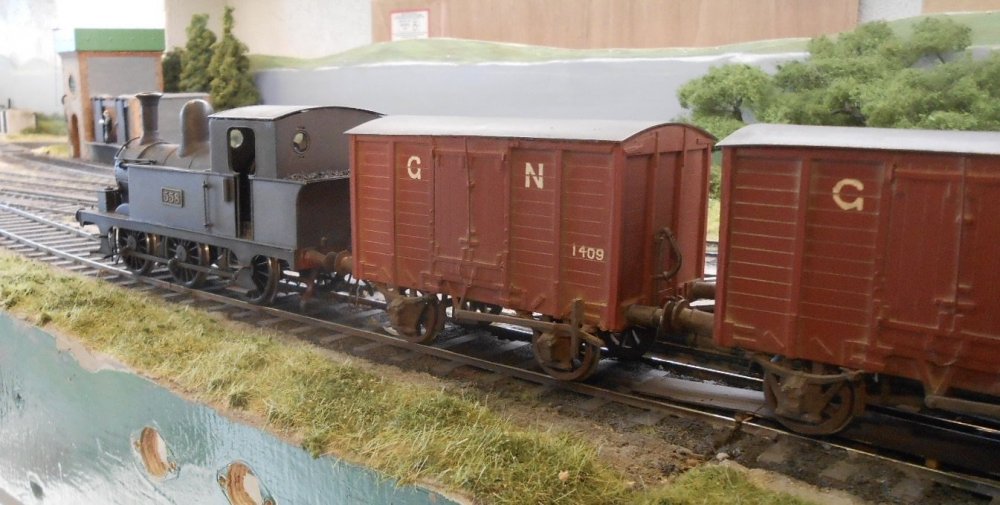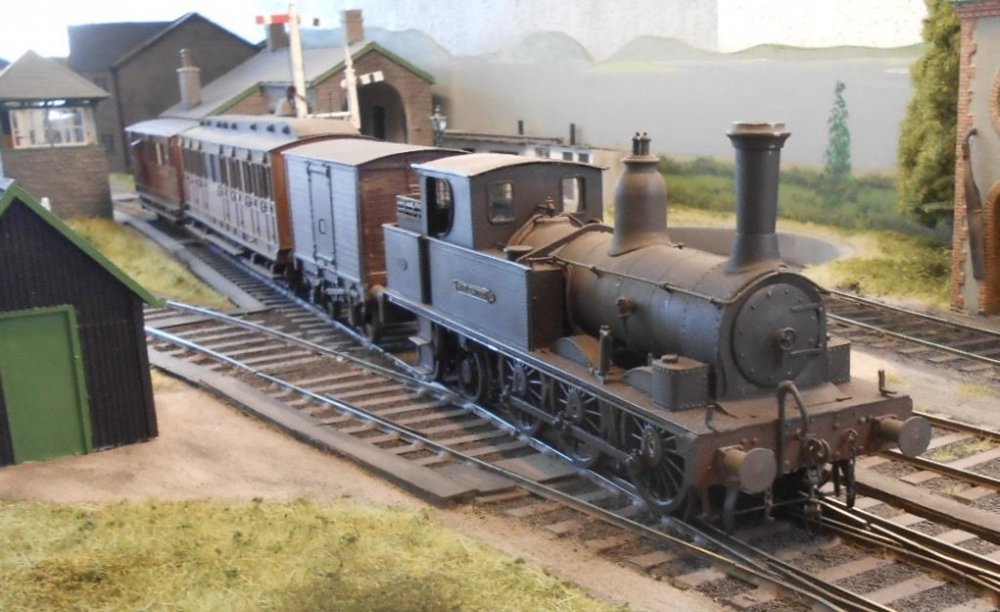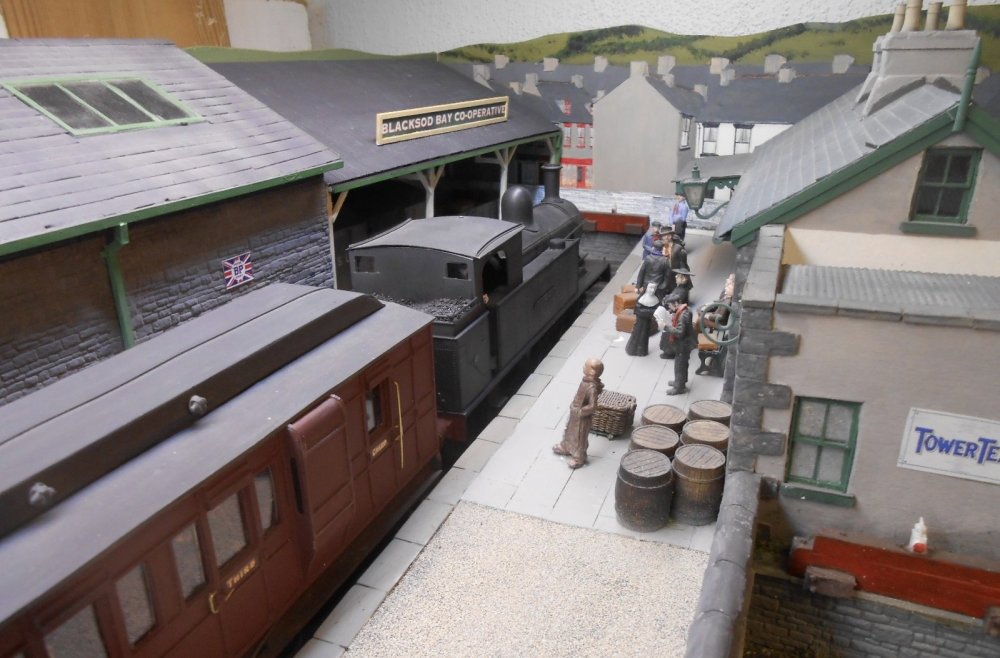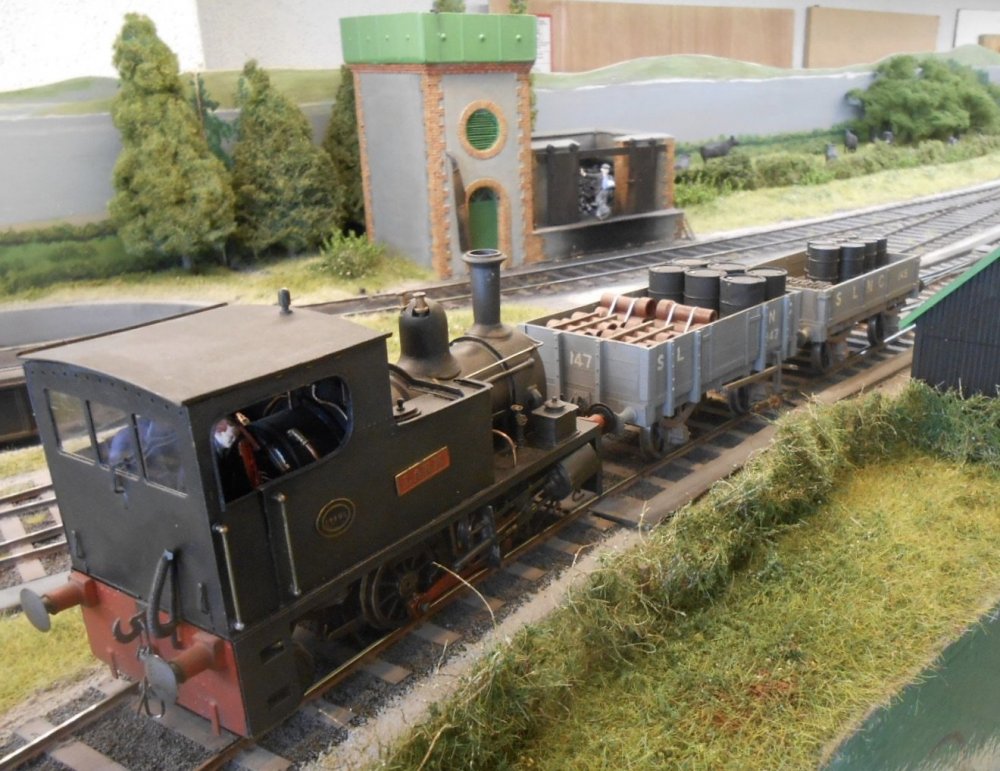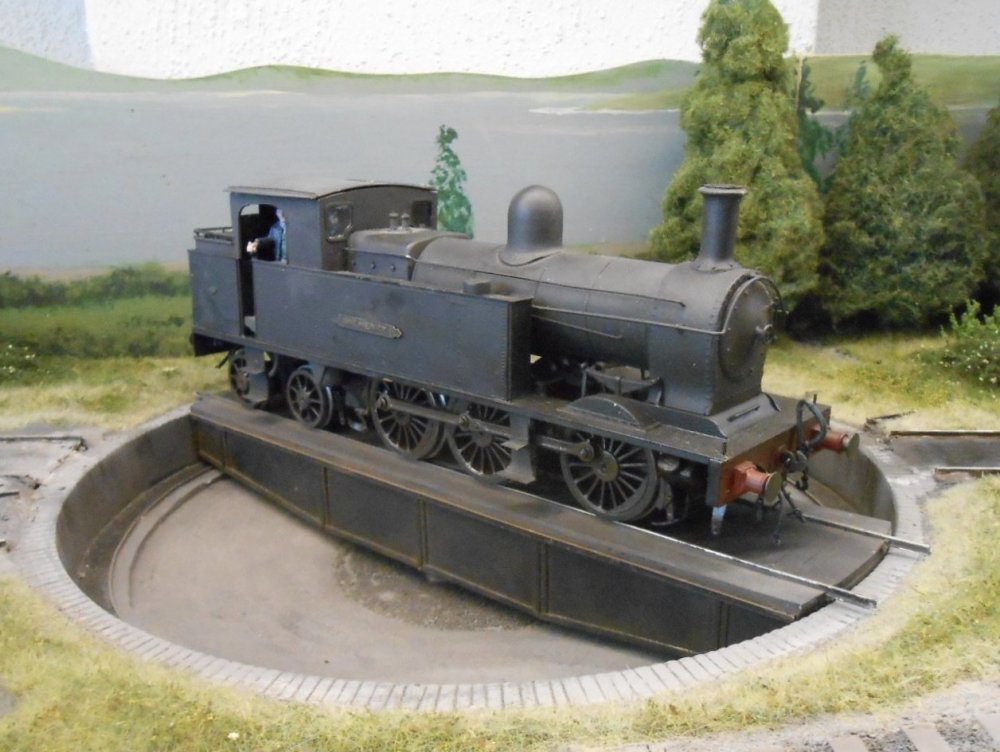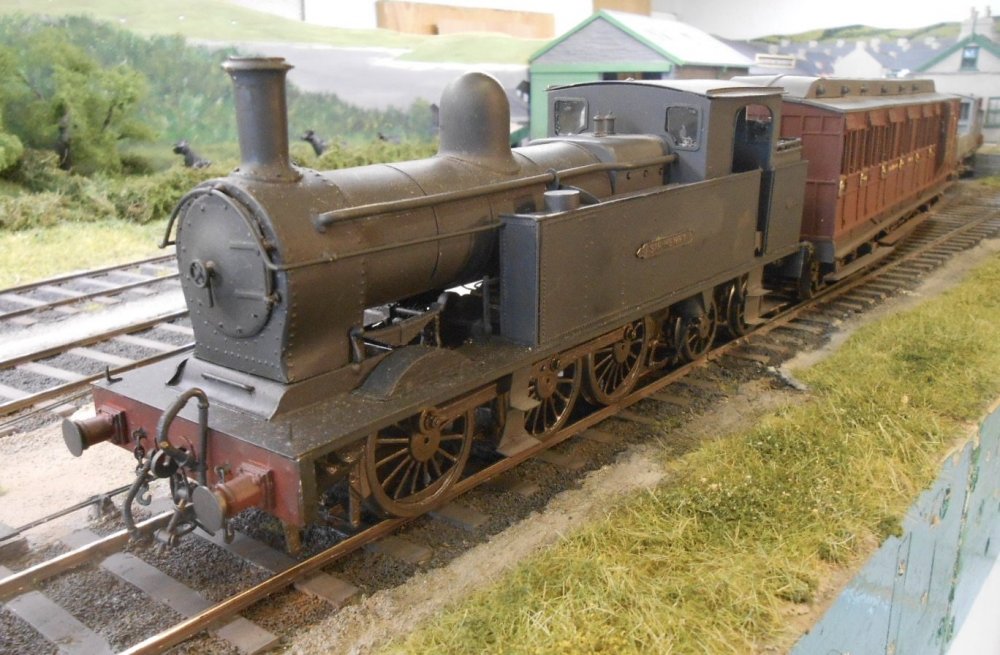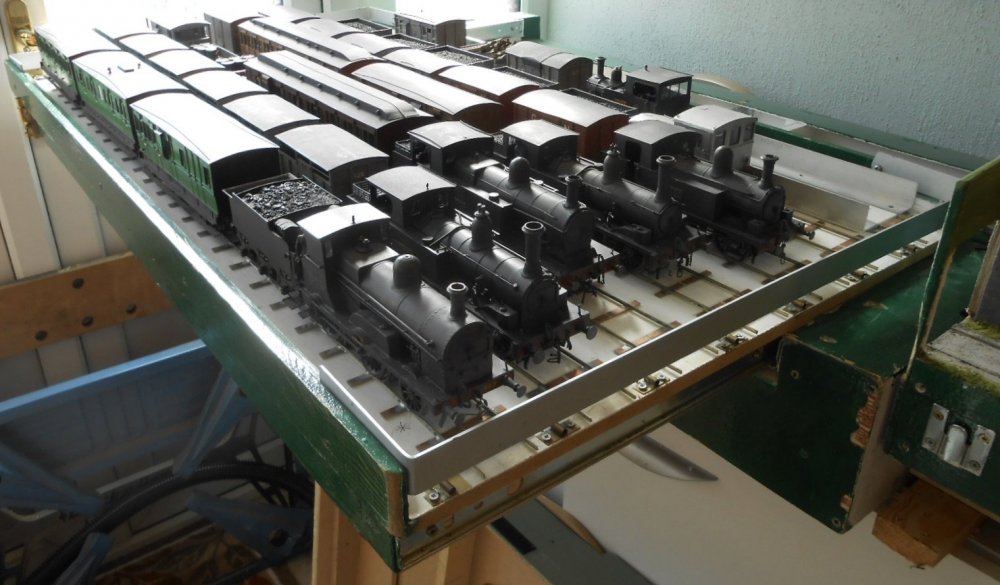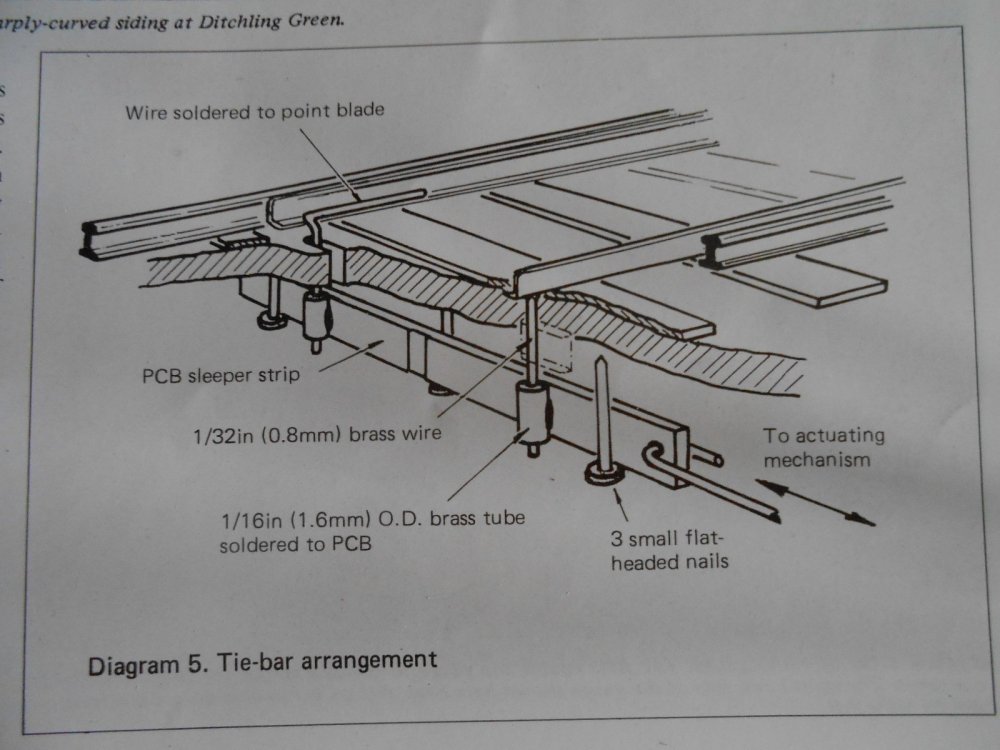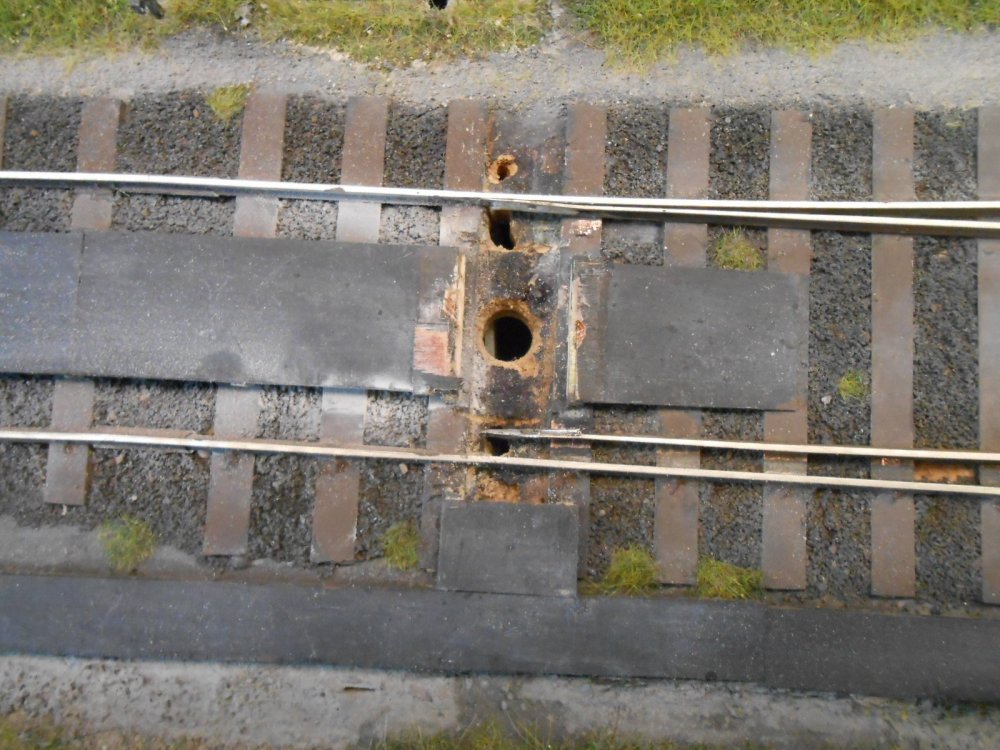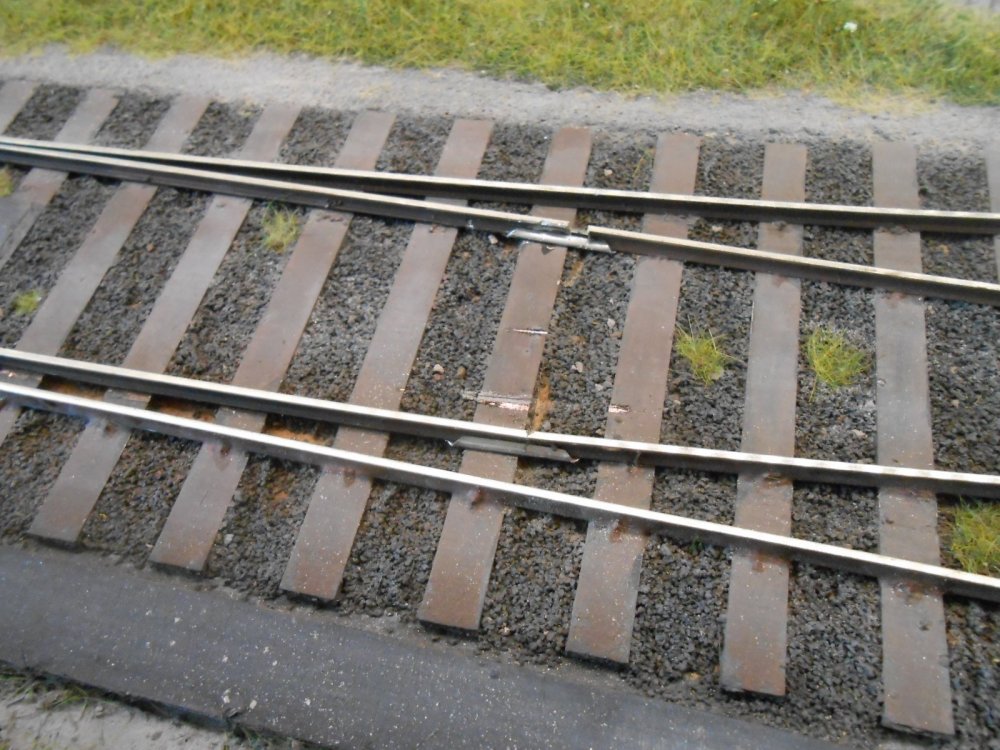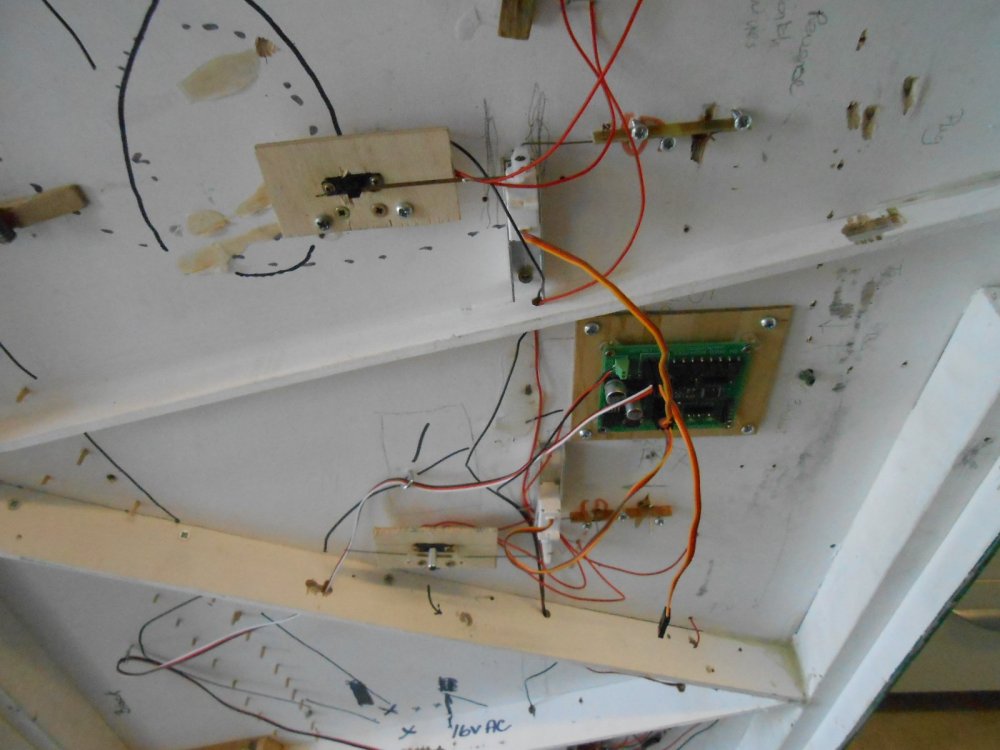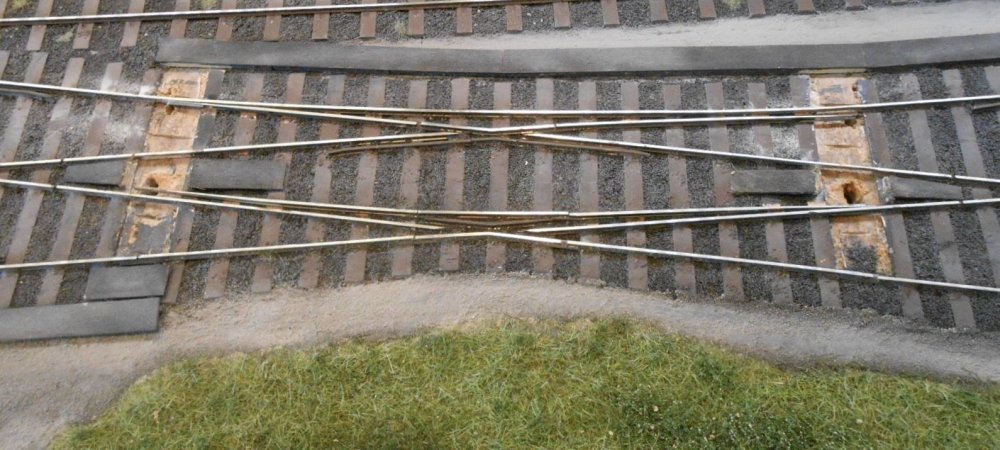
David Holman
Members-
Posts
4,359 -
Joined
-
Last visited
-
Days Won
117
Content Type
Profiles
Forums
Events
Gallery
Everything posted by David Holman
-
Lockdown working well it seems? All clouds have silver linings and Barrow Street is one of them!
-
Sligo van 2 and 3, possibly qualify as the shortest mixed train of all time. Drovers compartment, goods compartment and guard's area.
-
Been there, done it several times before I got the Irish bug. There were two 7mmNG essays - Hawkhurst High Weald and Cranbrook Town, which featured in Railway Modeller around 20-30 years ago and after that, Loose End, 7mm standard gauge, likewise in RM. Hawkhurst was broken up, but the other two sold as going concerns, though goodness knows what happened to them. That said, was reliably informed that Loose End made it to the same barn in France that housed Gordon Gravett's Ditchling Green. Fine company indeed! Before that there has been Oare, an EM gauge Col Stephens might have been, based on the Davington Light Railway, near Faversham. That went to about a dozen shows in the late '80s, but never made it into print. Diverse interests? You bet. Still have some of my 7mm standard gauge stock, notably Jane/Shannon, the George England Wantage tank that featured in an MRJ build it in stages series of articles by Laurie Griffin. Taught me a lot that little loco and still harbour ideas of doing a small layout just for it. By the by, the Wantage Town track plan scales out at just seven feet, in 7mm scale. See Iain Rice's book on Light Railways - that is only four feet in EM! Shades of Fintona? Just the small problem of making the horse tram work...
- 309 replies
-
- 1
-

-
- mgwr
- 21mm gauge
-
(and 1 more)
Tagged with:
-
Wow, you look away for a couple of days and suddenly there are two full pages of gold dust on the MGW. Well done Victor/Mark for starting it and everyone else for contributing! Can't add much myself, despite having a J26, G2 and four six wheel coaches on my CV. The contributors above have been very helpful in me building them. However, David Jenkinson's Carriage Modelling Made Easy (Wild Swan) is my Bible for passenger stock, while the Alphagraphix six wheel chassis is ideal for sitting plasticard bodies on. My Arigna Town layout, now being rebuilt into Belmullet, was based on a protected branch to the Arigna mines from the SLNCR. Neil Sprink's history shows there were several schemes, including at least one from the Burma Road too. Given the SLNC's poverty, a joint scheme with the MGW didn't seem too far fetched. Sligo, meanwhile had trains from GSW, MGW, WL&W and SLNCR in the early 1900s. Indeed Belmullet supposes the above four all contributed, to bring Canadian Pacific mails from Blacksod Bay. A certain Jonathan Beaumont of this parish very much responsible for my Imagineering in his splendid book Rails to Achill, which outlines a host of proposed schemes into deepest Mayo. The Steam Age in Ireland, by the Lord O'Neill, is an album of commissioned paintings, which give an idea of colours, though as JHB will council, they may not be all that accurate! Finally, for now, seems there Alphagraphix portfolio, especially the Tyrconnell etched brass kits, is not as large as was, mainly because Roger is concentrating on his British light railway lines and with my surname, I can hardly criticise...
- 309 replies
-
- 2
-

-
- mgwr
- 21mm gauge
-
(and 1 more)
Tagged with:
-
Probably need about 2m by 0.5m in 4mm scale, including the shunting neck. These sorts of layouts can make excellent short to medium term projects. Indeed, with commercial track, you could probably have it operational in a weekend and by using ready to plant buildings, it could be fully scenic in 2 - 4 weeks of lockdown. The main problem is that operation is a bit one dimensional in that you are limited to just shuffling wagons about - though a card index could make moves more challenging. Also, with only a single loco needed, it would be well worth investing in DCC for sound. Tried this with an American outline, dual scale, project a few years ago. It's in the foreign layouts thread under the name Dichotomy. Used 16.mm track for an HO Shay and an On16.5 Shay, each with a few boxcars. Sound made all the difference - whistle/horn for each move, brake squeal etc. With not much else to think about, you could make each movement that bit more realistic and absorbing.
-
Have to keep reminding myself how tiny the model is! A proper little jewel.
-
LEDhut are my 'go to' for lighting. They sell self adhesive strips with up to 70 LEDs per metre, in a wide range of formats, though I find 'cool white' works well. Fintonagh is 50cm deep and uses two strips, one above the front edge and one along the middle of the scenic area. The front strip is stuck to the pelmet, the middle strip is in its own 'tube' which LED hut also sell. It's a length of aluminium extrusion, with a clip on plastic diffuser. Works a treat and prevent heir service is excellent.
- 469 replies
-
- 1
-

-
- ballyercall
- layout
-
(and 1 more)
Tagged with:
-
Thank you one and all. Must admit, it is rather nice to have one's work appreciated like this, while when I look at the pictures of Sir Henry and the railcar/railbus, I also wonder - did I really make this? The answer is yes - a combined total of around 350 hours work, with Sir Henry half of that on his own. At the end of the day, any journey starts with a small step and that's really what all our models represent. The pleasure comes from knowing you did it yourself, so the models are unique and that is all part of the fun, frustration and [many] rude words along the way.
-
Trains! First of, thanks Victor for the positive comments and, as requested, here are some more photos. Have always thought that you should be able to identify the subject of a model railway without there being any trains in sight - landscape, architecture and so on all give a certain signature to the scene, but it its the trains themselves that cement it. So, after many months of rebuilding, have at last got back to the rolling stock. Nothing is running yet, as point control still needs attention, but I wanted to try out a few different combinations and, in particular, see if I could make my Dingham couplings work for me. The problem with Dinghams is that, though very effective, they are 'handed', with a hook one end of the vehicle and a loop the other. However, playing around with various sketches and combinations, it seems I can do pretty much all the moves I want for exhibitions and with just three electro-magnets - one each in the platform and bay, with another in the goods shed siding. The trains themselves are as follows and being all the stock from Arigna Town, will probably be familiar to many. The railcar and railbus will probably still continue to arrive in the main platform, but will now get moved to the bay for departure. This should allow them to be seen better and also allow a second train to arrive beforehand, making for a much busier scene. The first goods train will be for the harbour branch, so one of the Small Tanks [Fermanagh] is seen bringing in a rake of coal wagons, from the Arigna mines, of course. Once Fermanagh has retired to the turntable, the Deutz diesel pushes a rake of cattle vans up from the harbour. By hooking on to the coal train's brake van, a new train is made up and moved to the bay. The Deutz can then depart with the coal wagons down to the harbour and after, Fermanagh can head back east with the cattle. Next up, a G2 arrives with an excursion, made up of three MGW six wheelers. This is a simple out and back move, with the loco turned on the 'table, of course The second goods train serves the goods shed/co-op siding. The J26 0-6-0T works this, bringing in five mixed wagons and vans, which are swapped with those in the goods shed, using similar moves to the first goods. Another excursion arrives next, with the other Small Tank [Hazelwood] and a couple of old Sligo coaches and a van. Finally we have Large Tank, Sir Henry, with the mixed train. On arrival, Sir Henry retires to the shed, while 'Lark' [Timoleague and Courtmacsherry loco 'St Mologa] pushes two wagons up from the harbour and shunts so that these are eventually on the back of Sligo Brake 3rd number nine in the bay. Lark can then depart with the incoming wagons, while Sir Henry can set off back east again. The final picture shows the fully filled fiddle yard. Eventually, as mentioned before, the plan is to operate sequences for both the 1950s and the early 1900s, so once the layout is largely finished, I will have plenty more stock and loco building to do!
- 179 replies
-
- 13
-

-

-
All being well and travel getting back to normal, Fintonagh is booked to appear at Cultra in November MM.
-
Oh dear, seem to be dribbling again!
-
All the points are from Marcway of Sheffield. They are code 100 FB rail soldered on copper clad sleepers. I built the plain track myself from the same materials. Have used Marcway several times and always been happy with the product. Being hand made, they are more expensive than Peco - at least half as much again, but for me, worth it. Slaters wheels are fine on Code 100 rail. The points are finescale, not S7 C&L do points kits, which have ready machined blades and preassembled crossing vees. The correct chairs etc are supplied, which are slid on to the rail and then fixed to sleepers with solvent. Therefore, if you want bullhead track, the only extra thing needed would be a 36.75mm track gauge, ideally turned to include the flange way gap. Have built several 32mm points this way and they were very straightforward.
-
That looks a very fine model. Top job!
-
Works for me! I also like the gunmetal effect, but also add a bit of bauxite too and sometimes metalcoate gunmetal, as per Martyn Welch's seminal 'The Art of Weathering.
-
Going backwards to move forwards Or indeed to move anywhere. Decided it was time to change from all the scenic work and try a bit of running. After all the paint, powder, filler etc that had gone on the layout over the last six months, I didn't expect things to run smoothly, especially around the point tie bars - and so it proved. In fact it soon became apparent that having the point operating wire from the servo to the copper clad tie bar was going to put a lot of strain on servo, so in the end, decided to go back to the method Gordon Gravett outlines in his book '7mm Modelling, Part 1' [there is a part two, too]. The diagram probably explains things better than words, though I used round headed screws instead of small nails to hold the tie bar in place. I've also made the blades pivot, rather than just flex, as both the Y point and the single slip's blades are quite short and therefore stiff. Cutting through the blades with a slitting disc and then joining them again with rail joiners is all that is required. This puts much less strain on the mechanism, but has left me with some gaping holes to fill! Happily, the SLNCR were quite keen to board over point rodding, both alongside the track and between the rails, so mostly need to replace those centre boards. However, the single slip needs two micro switches to control polarity, so I used a double armed pivot, so that one end could move the point blades and the other the switch. For extra security, I will probably add switches to the other points as well, for like Peco ones, they rely on contact between the blade and the stock rail to transmit the current. So the above took a couple of days, while reminding myself of how the Megapoints control system works needed a couple more, especially ensuring the point blade movement was re-adjusted. I've lost count of the number of times I've lifted the boards off their mounting, so first work on the underside, then check the top surface. They certainly don't seem to get any lighter! Fingers crossed, I can start playing trains again soon, though all the locos are going to need a bit of TLC, both mechanically and cosmetically. At least there is still plenty to do during lockdown.
-
Suspect Galteemore and me will not be the only ones drooling over the Sligo tank! As for prototype track plans, a couple of turntables essential for the W&T, though not many wagons needed! Always thought Skibbereen (or was it Schull?) had an interesting track plan, with all trains having to reverse in and out of the headhunt. On a terminus - fiddle yard layout, it would be easy to hide the latter behind the goods shed.
-
Rattle cans rule! I too have an airbrush and compressor, but they are things that need practice. The set up and cleaning time is exponentially greater than painting time too, so it's best to store up work to make it worthwhile. Minor health warning though - JHBAchill will not be amused to hear of wagon chassis being painted black!
-
Southern hemisphere then?
-
Really brings a fine model to life. Top job!
-
Lovely stuff!
-
Makes sense to try and follow it though. Getting the overall composition right is a key part in the visual aspects of a model railway. Unlike a painting though, a model railway doesn't just hang on the wall, it needs to run well too!
-
Agreed. Ideally, if using a fiddle yard, the track needs to exit parallel to the baseboard edge, but no reason why it can't go diagonally (ish) across the scenic section. Increases the overall length a little too.
-
Guess much depends on whether the scene is rural or urban. Country stations were often well spread out, because land was cheaper, whereas town scenes could be very tight. 'Less is more' can be a good motto - in other words, avoiding too much track if you want to portray a realistic scene. Likewise, avoiding track that is parallel to the baseboard edge. Gentle, sinuous curves appeal to the brain for some reason too! Rice discusses the various parameters of layout design in his books. Certainly recommend 'An approach to layout design' and 'Creating Cameo Layouts' - both Wild Swan. He likens layout design to both stage design in the theatre and the way artists compose a picture, so there is visual balance and the eye is drawn in deeper. I've tried to follow these on all my layouts and hopefully Fintonagh gets fairly close. A balanced scene is often one framed by taller features at either end, with lower ones in the middle. On a longer scene, there might be a succession of these - after all, when you are standing close, your eyes can only take in about a metre or so. An effectively way of doing this is to have some structures (could be buildings, trees etc), in front of the tracks. They act as view blockers, effectively dividing a layout into several separate scenes and making even a short layout look longer. Add in lighting, back scenes, pelmets and fascias and there are all sorts of tricks one can use! Baseboard depth is another one. Back in the day, ace modeller Barry Norman used boards three feet wide, but five feet deep on his ground breaking layout Petherick. Helped shift them once when he brought it to the Chatham show. Made of double skinned 9mm ply, they weren't light...
-
Keep forgetting these models are 2mm scale! Little jewels - fine work in more ways than one.
.png.c363cdf5c3fb7955cd92a55eb6dbbae0.png)

